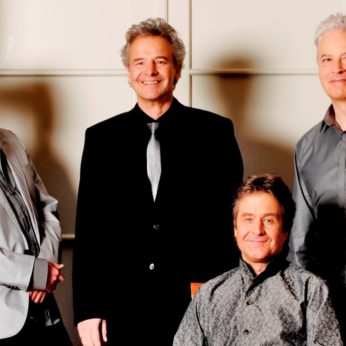It was Haydn’s unparalleled achievement, and it is our problem of comprehension, that each set is significant, and almost every work a rigorous investigation of the possibilities of the medium. David Wyn Jones in Haydn: his Life and Music
King Frederick William II of Prussia was a profligate, hypocritical and immoral absolute monarch, who left his country financially broke and militarily unprepared for Napoleon’s onslaught. However musicians look upon him more fondly for he was an excellent cellist and kept a famous musical establishment that was at that time renowned throughout Europe. His generosity towards musicians was such that he was the dedicatee of works by Boccherini, Haydn, Mozart and Beethoven, an honour that must be unique in musical history. Both Haydn and Mozart wrote sets of quartets known to posterity as their ‘Prussian Quartets’ on account of the dedication to Frederick William.
By the early 1780s Haydn was Europe’s most celebrated composer and music publishers were falling over themselves to acquire rights to his latest works. In those days before any form of copyright protection existed, composers would sell ‘exclusive rights’ to their compositions to as many publishers as possible in order to pre-empt publishers from producing their own editions. In the case of his Op.50 set he sold the exclusive rights to both Artaria in Vienna and Forster in London, meeting the protestations of Artaria with justified indignation, for publishers had done extremely well out of Haydn.
This B flat quartet is famous for the opening drumbeat figure on the cello, followed by a six-note cadential phrase featuring a gentle discord. This was undoubtedly Haydn’s answer to the opening of Mozart’s ‘Dissonance’ Quartet. The whole movement then grows from these opening bars. Haydn, it seems, has set himself the task of responding to Mozart’s expansive lyricism and harmonic sensuousness with ascetic monothematicism, rigorous logic and his ever-present dancing wit.
The slow movement contains a typically Haydnesque theme with three graceful variations. It is notable for the delicate conversation between first and second violin in the opening variation. The theme itself was engraved on the Haydn memorial erected at Rohrau, his birthplace across the border in Hungary. The Menuetto opens with a compressed version of the slow movement theme, whose ascetic texture is in contrast to the witty Trio, which features another argument between first and second fiddle. The Finale is another of Haydn’s unpredictable monothematic movements that sets off at great pace with one of his impossibly cheery tunes, further enlivened by his typically boisterous wit. We quickly find ourselves in a musical comedy that could put opera buffa to shame, replete with unexpected entrances and exits.
